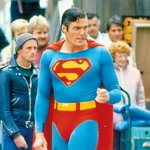 Weird Stuff
Weird Stuff  Weird Stuff
Weird Stuff  Animals
Animals 10 Inspiring Tales of Horses Being Human
 Mysteries
Mysteries Top 10 Haunting Facts About the Ghost Ship MV Alta
 History
History 10 Surprising Stories About the Texas Rangers
 Humans
Humans 10 Philosophers Who Were Driven Mad by Their Own Theories
 Miscellaneous
Miscellaneous 10 Video-Game-Worthy Weapons and Armors from History
 Weird Stuff
Weird Stuff 10 Psychics Who Accurately Predicted Wartime Events
 The Arts
The Arts 10 Pieces of Art Inspired by a Broken Heart
 Health
Health 10 Science Fiction-Sounding New Medical Treatments
 History
History 10 Surprising Facts About the Father of Submarine Warfare
 Weird Stuff
Weird Stuff 10 Times Real Laws Were Based on Bizarre Hypotheticals
 Animals
Animals 10 Inspiring Tales of Horses Being Human
 Mysteries
Mysteries Top 10 Haunting Facts About the Ghost Ship MV Alta
Who's Behind Listverse?

Jamie Frater
Head Editor
Jamie founded Listverse due to an insatiable desire to share fascinating, obscure, and bizarre facts. He has been a guest speaker on numerous national radio and television stations and is a five time published author.
More About Us History
History 10 Surprising Stories About the Texas Rangers
 Humans
Humans 10 Philosophers Who Were Driven Mad by Their Own Theories
 Miscellaneous
Miscellaneous 10 Video-Game-Worthy Weapons and Armors from History
 Weird Stuff
Weird Stuff 10 Psychics Who Accurately Predicted Wartime Events
 The Arts
The Arts 10 Pieces of Art Inspired by a Broken Heart
 Health
Health 10 Science Fiction-Sounding New Medical Treatments
 History
History 10 Surprising Facts About the Father of Submarine Warfare
10 Behind the Scenes Facts About Iconic Movie Fights
Some movies feature fight scenes that feel like mere filler, but others craft them so expertly that they become iconic. Whether they dazzle with creativity or feel particularly realistic, these fights elevate the film they are a part of. All these fight scenes have their own interesting journey from the mind of their creator to the screen, so here are 10 behind-the-scenes facts about the making of some of the most iconic movie fights, from stunts gone wrong to last-minute changes that drastically altered the movie.
Related: Top 10 Most Brutal Modern Fighting Sports
10 Hiding the Camera
Enter the Dragon (1973) is one of the best martial arts movies ever made, but unfortunately, Bruce Lee never got to see its massive impact, dying just a month before the premiere. The most iconic scene is the climactic fight between Lee and Han (Shih Kien) in the mirror room, where kicks are replicated in reflection, and Han temporarily evades Lee’s attacks.
The mirror room setting was director Robert Clouse’s idea, but shooting came with the obvious issue of the camera being visible. To tackle this problem, cinematographer Gil Hubbs explained that they built a “closet” with mirrors on the outside and a hole for the camera. Then he and an assistant filmed from inside. Hubbs recalls that he “actually got nauseous in the room” and that “Bruce banged himself into the mirrors a whole bunch.”[1]
9 Creating the Power Loader
The Power Loader in Aliens (1986), which makes Ripley’s hand-to-hand combat with the Alien Queen possible, was designed by director James Cameron himself. The drawings were then given to John Richardson, the practical effects supervisor, to make Cameron’s vision a reality.
Richardson stated that creating the Power Loader was the “most challenging thing in the movie,” particularly because they only had three months to do it. It was operated by stuntman John Lees, who was hidden directly behind Sigourney Weaver. However, because the Loader was so large, it was also supported with wires from the top and a pole arm from the back. Lees and Weaver had to be perfectly in sync, so they rehearsed during lunch each day, with Weaver recalling that they would walk “the Power Loader around in a sort of ring somewhere in the studio, like a horse going through its motions.”[2]
8 Odes to Martial Arts Movies
Quentin Tarantino is known for filling his films with references to other films, and the two Kill Bill (2003 and 2004) movies are no different. The scene where Uma Thurman’s The Bride takes down the katana-wielding Crazy 88 gang is packed with shots that draw on martial arts movies, among others.
The Bride’s yellow outfit is an homage to Bruce Lee’s outfit in Game of Death (1978), and the gang encircling her and then moving back in fear when she raises her sword mirrors a scene in Lee’s Fist of Fury (1972). The eye being plucked out was inspired by Five Fingers of Death (1972), and the person being vertically cut in half is from Ichi the Killer (2001). The section shot in silhouette against a blue background was inspired by Samurai Fiction (1998), which uses a red background.
Tarantino went beyond just imitating shots, though; he also made Kill Bill in what he calls “the Chinese Way.” He wanted the look of 1970s Samurai movies, so he used condoms filled with fake blood instead of CGI blood. Tarantino again turned to Asian cinema for guidance when the goriness of the Crazy 88 fight ran the risk of censorship. In the ’70s and ’80s, bloody scenes in kung fu movies were played in black and white on television so they could be run without cuts, so that is exactly what Tarantino did for part of his iconic fight.[3]
7 An Original Depressing Ending
Rocky (1976) ends with the titular character, played by Sylvester Stallone, losing his fight against Apollo Creed (Carl Weathers) but joyously embracing Adrian (Talia Shire) in the ring as he has proven he can go the distance. But the ending scene that was initially shot is of Rocky and Adrian somberly leaving through a tunnel strewn with litter. The film’s poster of Rocky and Adrian holding hands is taken from this footage.
Producer Irwin Winkler has said that during test screenings, “everybody was standing on their feet cheering and yelling” for the fight scene, but when Rocky and Adrian walk out, “that whole high that we were getting from the audience suddenly dipped down to a real low.” The studio refused to pay to reshoot it, so Winkler and fellow produced Bob Chartoff personally paid $25,000 to shoot the triumphant scene of Adrian coming into the ring.[4]
6 The “Duel of the Fates” Score
The climatic battle between Qui-Gon Jinn (Liam Neeson), Obi-Wan Kenobi (Ewan McGregor), and Darth Maul (Ray Park) in The Phantom Menace (1999) is one of the greatest lightsaber fights in the Star Wars movies. The duel is narratively important, but it also looks cool, from the fight choreography to Maul’s double-bladed lightsaber. John Williams’s orchestral and choral masterpiece “Duel of the Fates” elevates the fight even further.
The lyrics are a Sanskrit translation of part of a medieval Welsh poem called “Cad Goddeu” (“Battle of the Trees”). Williams explained that he wanted the score to sound “religious or have a religiosity to it so that you felt that you were watching a ritual.” He viewed the fight as a ritualistic battle between good and evil, so his score “wasn’t action music accompanying the fighting, but some support to a spiritual contest.”[5]
5 Bullet Time Technology
In 1999, The Matrix popularized the effect known as bullet time, which is not just a fancy term for slow motion. Instead, bullet time has the camera moving through the scene at normal speed while elements within the shot are captured in slow motion. In The Matrix, this effect perfectly blends the sci-fi storyline, which sees characters bending the laws of physics with kung fu action.
To create bullet time, visual effects supervisor John Gaeta and his crew would make a computer simulation of the scene to figure out how the cameras would be positioned around the actor. The most famous bullet time scene, where Neo bends backward to dodge bullets on a rooftop, required 120 still cameras and two film cameras. Keanu Reeves performed the move on a green screen with the aid of wires as the cameras around him shot in sequence. A process called interpolation adds extra frames and then smooths out the assembled photos to make them appear more fluid.[6]
4 The Influence of Wrestling
When casting the lead of They Live (1988), director John Carpenter wanted someone with the weathered look of a life of hard work. Carpenter was a wrestling fan and realized that “Rowdy” Roddy Piper would make the perfect Nada. “Unlike most Hollywood actors, Roddy has life written all over him,” Carpenter explained. The influence of wrestling then seeped into the film’s iconic six-minute-long fight scene between Nada and his friend Frank (Keith David).
Stunt choreographer Jeff Imada had creative control over this scene but recalled that Carpenter “asked me to include three things; three wrestling moves. A suplex, a clothesline, and a sidewalk slam.” Carpenter took full advantage of Piper’s wrestling experience, and “Why not?” he declared, “I had a wrestler as the star!” Piper lent the fight a scrappy realism, with his co-star and fight partner stating, “No one could sell giving or taking a punch better than him.”[7]
3 Trick Horse Riding
Although stunt doubles are utilized in the John Wick franchise, Keanu Reeves does about 90% of his own stunts. And this was pushed to new limits in John Wick 3 (2019). Director Chad Stahelski, who was also Reeves’s stunt double for The Matrix films, wanted to feature horses, and Reeves suggested having a fight in a stable. Stahelski then decided, “F*ck it, he’s gonna get on a horse because Keanu said he can ride a horse.”
The resulting scenes offer some of the best action in the film, from the brutal use of horses as weapons to the thrilling chase on horseback through the streets of New York City. Reeves learned how to do trick-riding for the scene, which involved him riding a horse at high speed, hanging off its side, and then smoothly reseating. He was attached to a safety harness throughout training and filming, but the stunt was still pretty dangerous.[8]
2 An Unplanned Single-Shot
The corridor fight in Park Chan-wook’s Oldboy (2003), which sees Oh Dae-su (Choi Min-sik) take out many enemy henchmen with his trusty hammer, was originally meant to unfold in the typical style of splicing together different shots, ranging from close-ups to overheads. However, once on set, Park decided to shoot it in one continuous take.
The single-shot fight feels incredibly realistic, but it was exhausting for Choi to film. Yang Kil-yong, the film’s martial arts choreographer, stated that “60 to 70 moves” were in the scene and that Choi “was so tired, he could barely stand. He was about to drop dead.” Choi himself commented that “after doing over ten takes, I started getting nauseous. That crafty director waited until I actually got tired. So we did 16 or 17 takes.” The only added movie magic was the CGI knife in Dae-su’s back.[9]
1 Real Violence
The Raid (2011) stars Iko Uwais as Rama, a rookie cop who relentlessly takes down the bad guys of an apartment building run by a crime lord. Uwais, who helped choreograph the fight scenes (i.e., almost the entire movie) with his Silat teacher Yayan Ruhian, is a skilled martial artist, so he was able to convincingly sell his countless hits. But another reason some of the fights looked so realistic is that they were actually real.
In an interview with GQ, director Gareth Evans recalls that during one scene, Uwais and his sparring partner decided to fully hit each other: “They’re just beating the crap out of each other because they’ve worked on a previous film together, and they know their limits.” Not all of the violence was planned, though. During a stabbing stunt that used chest padding and a retractable blade knife, the padding slid down, which meant the stuntman was hit so hard he could barely breathe.
Even worse was the scene where Rama launches someone over a balcony, and they break their back on the balcony of the next floor down, which required the use of wires. During one take, the wire-pull was miscalculated, so the stuntman smashed his head into a wall on the second floor. He lost his balance and let go of the wire, bouncing away from the crash mats and falling 16 feet (5 meters) onto concrete. Evans added, “We figured he must be dead.” But, unlike his character, the stuntman was luckily okay.[10]








